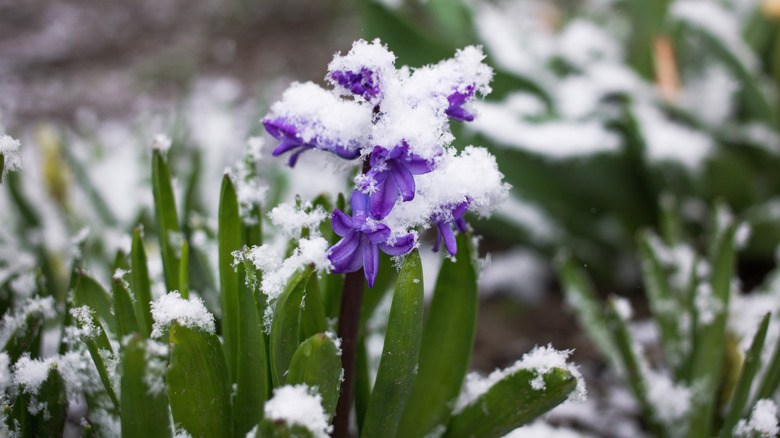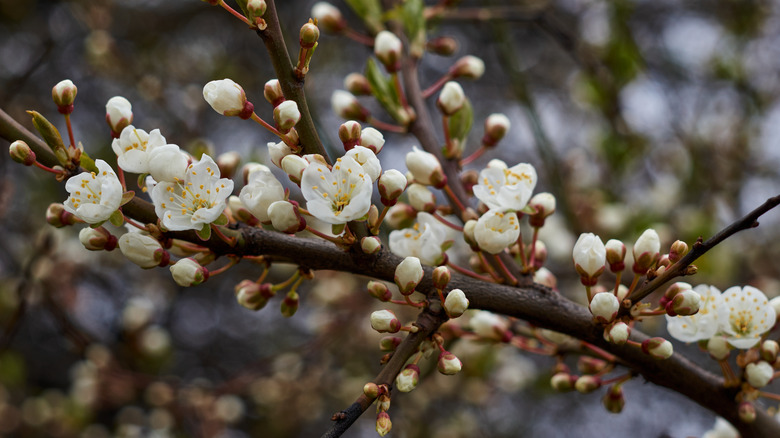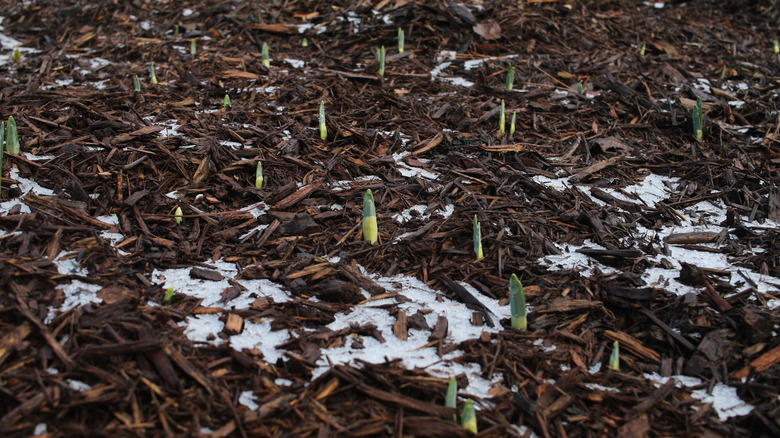What Happens To Spring Perennials If They Bloom Too Early?
Perennials offer such a gift to gardening fans because with the proper care, they keep coming back. Depending on the type of plant, you can expect blooms in early spring or summer or even going into fall, in the case of sunflowers, dahlias, and some varieties of mums.
For the most part, however, most perennial flowers tend to go dormant during the colder months and appear again in the spring. While this cycle sounds predictable, there are some years when the sporadic weather patterns of late February going into March can affect early blooms.
So what happens if your plants start to bloom during this time, only to be met with another round of plummeting temperatures? Can damage from frost be prevented or at least resolved to maintain the plant's health? Luckily, most perennials have their own set of survival traits. And with a little help from you, the gardener, they'll be just fine for the rest of the growing season.
It depends on the plant.
If you experience a late-winter freeze, the leaf buds on some trees and bushes could be damaged, but these plants often start sprouting again without skipping a beat when the weather warms back up.
Unfortunately, in the case of cherry, apple, and other fruit-bearing trees that are renowned for their spectacular spring show, you'll have to wait until the following year if a late winter frost kills off their blossoms. Nonetheless, they have not sustained any lasting damage, which is fortunate.
For bulbs, such as hyacinths, daffodils, and tulips, you have little to worry about. Chances are their stems and leaves may peek out from underneath the ground before a late winter snow or a late freeze occurs, which results in some discoloration on the leaves due to the cold temperatures. However, the damage is not severe as these bulbs are strong and can withstand the cold. If the flower buds are still underneath the soil when the cold snap hits, you will still see flowers in the spring.
How to protect the plants
As mentioned in the situation of fruit trees that blossom in the spring, there's little you can do to prevent damage, but there is one tactic to try if high winds aren't a factor, and that is to place a cover that's specifically made for protecting tree blossoms from the cold at night. Keep in mind that this task often takes two people to complete, and the tree might be too tall and too wide for the cover to be effective. However, if you are successful at applying the canopy, you'll need to remember to remove it during the day.
On the other hand, bulbs are easier to protect if you remember to cover them with a generous amount of mulch in late fall or early winter. This measure should prevent early blooming from happening too early. Likewise, an unexpected snowfall in late February or early March helps regulate the temperature underneath the soil and keeps the buds from sprouting prematurely.


